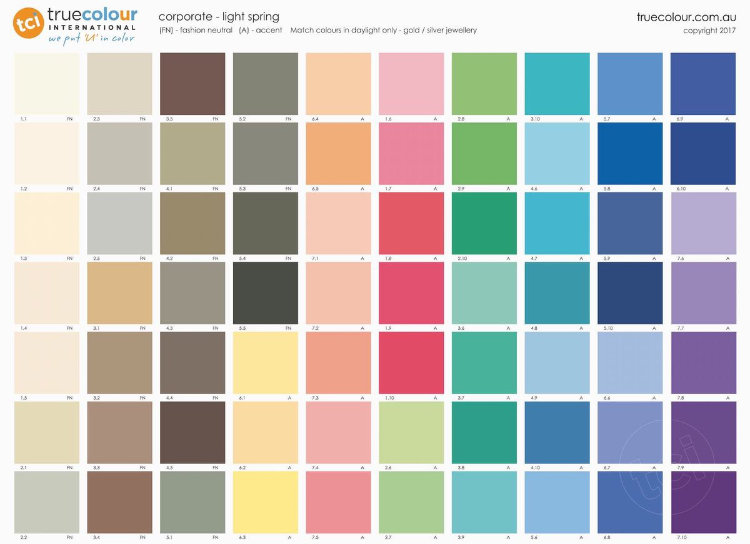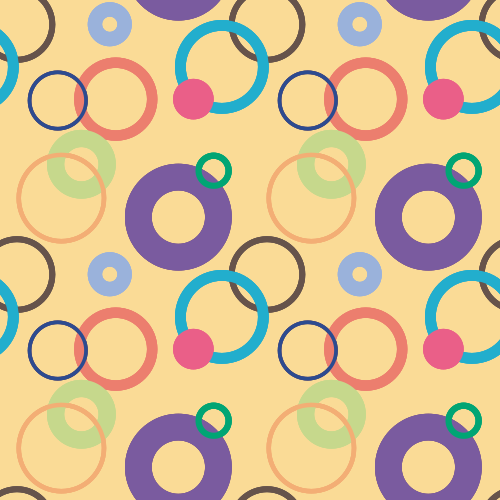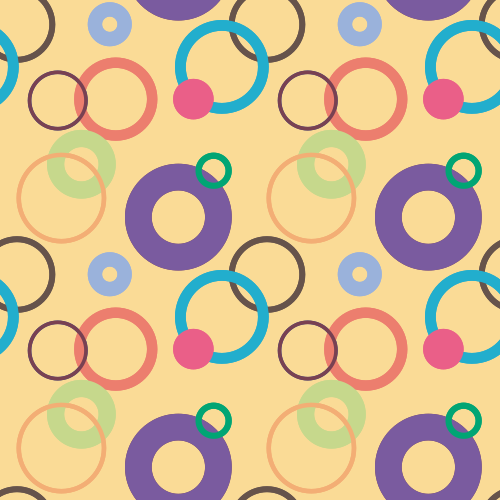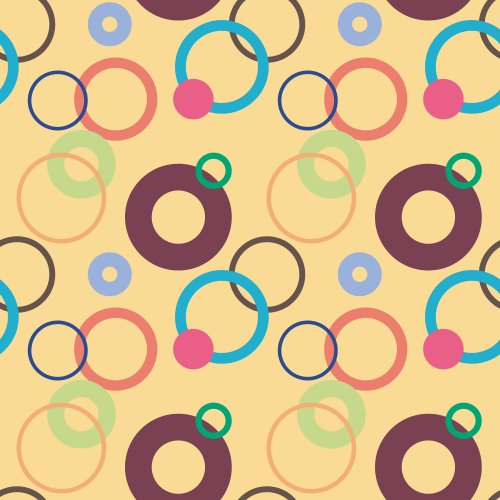Light Spring: The Ultimate Guide
Light Spring is joy and hope made visible.
These are the colours of budding spring flowers and baby ducklings — the colours of new life.
Related: Images in 12 Tones
The palette
Light Spring colours are delicate, airy, diaphanous, playful and effervescent.
In our 12 tone chart, Light Spring falls on the path from True Spring to True Summer. It combines Spring’s bright, sunny palette with a touch of Summer’s delicate serenity.
So where do Light Spring colours sit on the 3 dimensions of colour?
The colours are overall high in value — there are many light colours and fewer darker ones.
The colours are neutral-warm, so they contain both yellow and blue undertones, but more yellow than blue.
Finally, the palette is medium-high in chroma (saturation).
Compared to Light Summer these colours are warmer, brighter, and slightly lighter overall.
Compared to True Spring these colours are softer, cooler and lighter overall.
Compared to Bright Spring these colours are the same temperature — neutral-warm — but are softer and lighter.
Light Summer colour dimensions
For more on understanding Light Spring colours, see The Value of Colour by Amelia Butler from True Colour International.
Clothing
If you’ve just discovered that you are a Light Spring, and you’re learning how to create a Light Spring wardrobe, congratulations! These are gorgeous colours.
You have many beautiful neutrals to choose from, like eggshell and meringue, flax and beech, chocolate milk and hazelnut. Light versions of denim can work too, another useful basis for a wardrobe, and infinitely more flattering than black.
Black is one of your worst colours, being cold and dark, while you are light and neutral-warm. The closest you have to black is a medium-dark warmed grey, on the cover of your TCI Light Spring fan.
Beyond your lovely neutrals are a rainbow of colours, all of which will look beautiful and appropriate on you (you can handle a lot of colour). And because they’re tonally harmonious, they combine beautifully with each other.
Some example combinations are shown on the last arm of your fan, and on the classic palette shown above. And here are some more:
Putting it all together, here are some examples of outfits in Light Spring colours for women and men:
Related: Women’s Fashion in 12 Tones
Related: Men’s Fashion in 12 Tones
The styles of these outfits are those I can find in these colours, but use your colours in whichever styles work for you.
For more inspiration, True Colour has a 12 Tone Light Spring Pinterest Board showing wardrobe ideas for men and women, as well as these blog posts:
Corporate Clothing
When I’m discussing corporate clothing here, I’m talking about more conservative workplaces — if yours is more casual, this may not be relevant for you.
That said, corporate clothing, in terms of colours, usually consists of some or all of these:
Neutral colours
Dark colours
High value contrast (light/dark)
The last two of these are difficult for you — the whole point of Light Spring is that the colours are light, and darkness is problematic for you. And without much darkness, high light/dark contrast is hard to achieve.
Nevertheless, because you are light, your darker colours will appear relatively darker on you than they would on others. So you can use them to create the appearance of darker or more contrasting looks.
Neutrals, on the other hand, are plentiful. They will look professional and polished without weighing you down and diminishing you.
There are examples of colour combination for corporate wear on the last arm of the TCI Light Spring corporate fan, and here are some more:
For more on corporate clothing, see Light Spring Corporate Women from True Colour.
Patterns
Matching solid colours to your fan is one thing; matching patterns can be a trickier task.
If harmonising with the fan is too hard, try checking it against your face. If the colours are right, you’ll see the same effects you saw during your draping, like vitality, happiness, 3-dimensionality and authenticity.
What if most of the colours in a pattern are Light Spring, but there’s one that clearly isn’t? Does it matter?
It depends on how badly the incorrect colour clashes with Light Spring, and on the size of the element.
In the first pattern below, all the circles (and the background) are in Light Spring colours.
In the second a thin blue circle is changed to a True Summer maroon colour, and in the last the thick purple circle is changed instead.
Clearly, the first is perfect.
In the second pattern, the disharmonious circle is thin enough that the colour isn’t too noticeable, and doesn’t change the overall Light Spring-ness of the pattern much (though this may change for you depending on the size and resolution of your screen).
In the last, the thick maroon circle is much more noticeable, and to my eye clashes too much to be a useable pattern for Light Spring.
Metals, jewellery, watches and glasses
Light Springs can wear both gold and silver. Rose gold is also wonderful — in fact, I’d call it the quintessential metal of Light Spring.
As a light tone, lighter versions of metals are usually best. So a light, yellow gold will be better than a deep, rich one. And metals can be shiny or brushed or matte, but antiqued or oxidised finishes will darken them too much.
Beautiful stones for Light Spring jewellery include cream and pink pearls, mother of pearl, coral, turquoise, amazonite, opal, chrysoprase, jade and tsavorite. Diamonds are too cold by themselves but can work as smaller stones in a yellow or rose gold setting.
All the metals discussed above can work for glasses frames, as can any of the colours in the palette.
Hair colour
Light Springs, as the name suggests, usually have hair colours on the lighter end of the scale, so blonde is common here. Brown or red are also possible, but again they’re likely to be light versions of them.
Makeup
Complexion makeup (foundation, concealer, etc.) needs to be matched to your skin. If you have trouble finding or matching foundation, I have a blog post that might help.
The “colour makeup” comes from your Light Spring palette.
Light Spring neutrals
Eye makeup usually comes from the neutrals in the palette, the creams, browns and greys.
Brows are often best in the grey-brown or grey-green range, or the warmer browns if you have red hair.
Eyeliner and mascara are brown or taupe, or maybe grey, but never black.
Light Spring greens, blues and purples
Eye shadow can also be beautiful in some of the more colourful options, especially the pinks, peaches and yellows. And the blues and greens are lovely as eyeliners, picking up those colours in the iris.
Light Spring pinks and peaches
Blush and lip colours come from the pink, peach and coral area of your palette. All will work on you, but most women will find their perfect shade is somewhere within this range, so trial and error may be necessary here.
Related: Makeup Looks in 12 Tones
Light Spring colours naturally make for fresh, delicate makeup looks.
That doesn’t mean insipid or colourless, though, not at all. Light Spring is delicate, yes, but also very colourful.
So, a pale peach lip can be great for a barely-there look; but one of your more intense corals will be gorgeous for a more dramatic or playful look.
Be aware that your complexion can easily be overwhelmed by heavy, opaque makeup, so sheerer or more lightweight options are usually preferable. For example, a sheer lipstick or gloss rather than a matte lipstick, or a thin liquid foundation rather than a thick cream one.
Also be careful with bronzing and contouring. Many bronzers will be too dark and earthy for you, but if you want to wear bronzer, look for one with a light peachy tone. And I’d avoid contouring if you’re not in a photo shoot — in real life it can look heavy and dirty, especially problematic on your ethereal complexion.
You can see the products I use for Light Springs, plus curated palettes and eye looks, in my post Light Spring Makeup Kit.
Weddings
If you’re getting married, congratulations!
Wearing your suit or dress and accessories (like a boutonnière or bouquet) in your colours will bring out your best on your wedding day.
A Light Spring suit could be in any of your gentle, warmed greys, light taupes or hazel browns.
For a traditional wedding dress choose one of your versions of white, like eggshell or meringue. Light peach or blossom pink are beautiful alternatives.
If you choose to, you can extend your colours to your bridesmaids’ dresses and grooms’ suits, your flowers, cake and venue decorations, to create a harmonious, sweet and gorgeous wedding as you can see below.
Related: Wedding Inspiration in 12 Tones
Living spaces
Light Spring rooms require forethought to create — stark white walls, deep orange floorboards, or dark fittings will all interfere with the fresh, joyful effect these colours can create.
But, as you can see below, the reward for that forethought is a special and delightful environment to live in.
Related: Living Spaces in 12 Tones
Have a question or comment about this post?
Pin this:



















